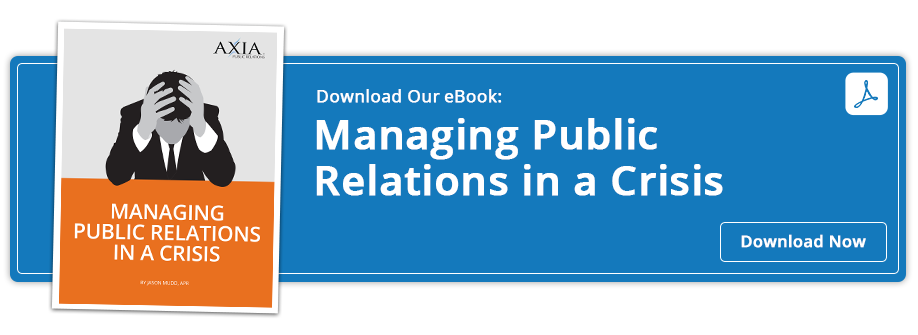 Prepare for the worst so you perform at your best
Prepare for the worst so you perform at your best
Consumers are irrational. It’s part of the thrill of doing business: seeing if your company can decipher the right combination of wants versus needs and create an optimum strategy for pricing products for maximum profit.
Businesses generally have policies or processes to handle expected variables such as low inventory, staff illnesses or a new product launch. Rarely, however, are companies in the mindset to pre-identify triggers that would help them recognize when events start drifting outside of the realm of normal operations.
The earlier you can identify a crisis, the better situated your company will be. But the definition of a crisis can vary between people and businesses. Here are three red flags that could indicate an emerging crisis.
- An event outside of normal operation expectations begins to escalate and becomes a situation with crisis potential.
- An anomaly occurs that could potentially cause embarrassment to your company or its leadership, with expected profit or reputation diminishment.
- Speculation by outsiders that takes a once controllable situation and forces your company to place valuable resources toward managing the ramifications, rather than focus on normal operations.
In emergency management (EM), the field that focuses on the worst-case scenarios, we typically plan for low-frequency high-impact events. That way, we are prepared for the catastrophe when we may only have a small flame – it’s much easier to downshift than escalate. You can take international disaster standards and create a robust crisis management process to handle the unforeseen hazards specific to your business. By preparing a corporate crisis kit that is flexible and focused on your company’s unthinkable disasters, you can stay ahead of bad news.
- Preparedness: Create sound processes and messaging through public relations, keeping the brand identity intact throughout a variety of events.
- Host a tabletop discussion involving leaders from all areas of the company that will identify hazards to success (internal and external variables) and what you will need to counteract these danger areas.
- Identify areas from the tabletop that have low bandwidth (important areas which have little room for errors or have right-sized staffing) with follow-through on how to bolster those areas when a situation occurs.
- Train employees on crisis examples identified in the tabletop, understanding employees need to be comfortable with the unusual events and how the company will handle them (they are your best brand ambassadors).
- Mitigation: Create levels of redundancy that are right for your business (cross-train staff or having offsite technology backup files) to reduce impact if something happens at your physical locations.
- Create alternative processes, such as allowing staff to have access to email or various files from remote locations, to combat non-business events (water main break, sinkhole or road closures).
- Implement the alternative communications process if the staff doesn’t use it routinely, making sure to test the process once a month (EM calls this a functional drill).
- Recovery: By planning earlier for variables that could happen in your industry, you create a toolkit of go-to items that only need to be moderately adapted to the situation at hand.
- Improve understanding of the unknown or unexpected, and review generic variables (even from other companies) to set the stage for re-engagement in normal business activities.
- Foster feedback loops to capture lessons learned – even a small disruption in business will teach you something and cause you to come back stronger and better, proving to customers and investors that you are the right choice for them.
Remember, timing is everything and location contributes to your hazards. Special teams can help you prepare for your worst nightmare, making it less of a disaster than if you hadn’t taken steps to mitigate. Prepare your company with Axia Public Relations’ e-book, Managing Public Relations in a Crisis, before you find yourself in crisis management mode.

 Heather M. Hilliard is a marketing and strategic planning professional with expertise in crisis management communications. With two master’s degrees and her international Certified Emergency Manager credential, she has worked through disasters as well as “normal business” to offset the impact of both large- and small-scale events in a variety of industries. She is an adjunct professor at Tulane University and has worked for Axia Public Relations since December 2015. Connect with Axia on Twitter @axiapr or tell us what you think in the comments below.
Heather M. Hilliard is a marketing and strategic planning professional with expertise in crisis management communications. With two master’s degrees and her international Certified Emergency Manager credential, she has worked through disasters as well as “normal business” to offset the impact of both large- and small-scale events in a variety of industries. She is an adjunct professor at Tulane University and has worked for Axia Public Relations since December 2015. Connect with Axia on Twitter @axiapr or tell us what you think in the comments below.
Featured image credit: 123rf.com
Topics: public relations, reputation management, crisis communications

Comment on This Article